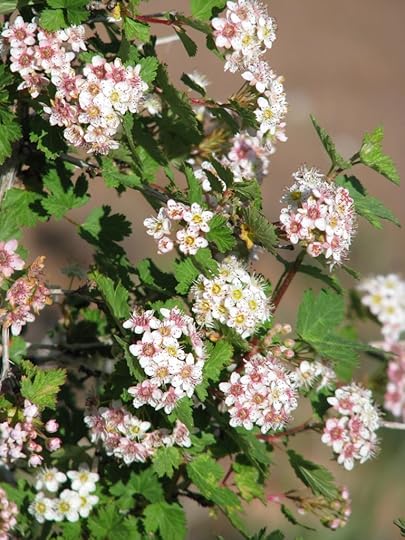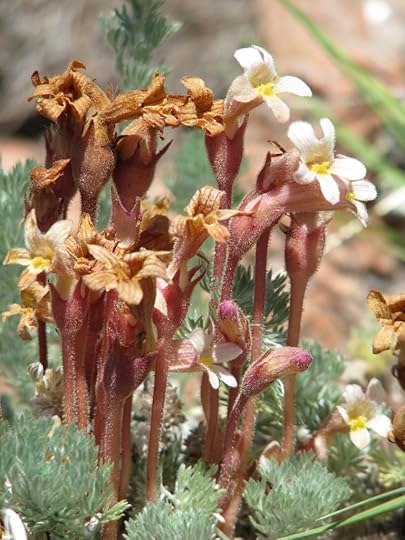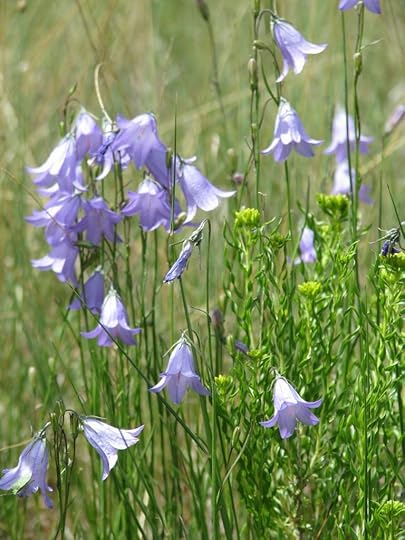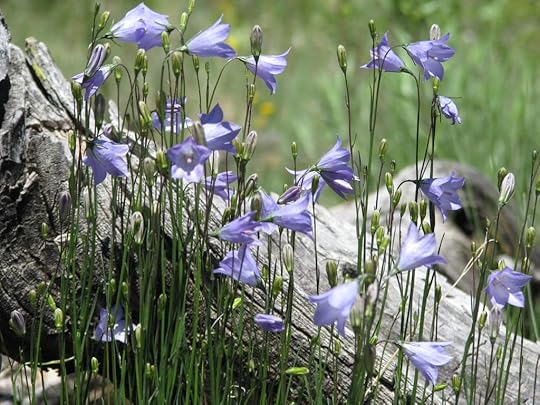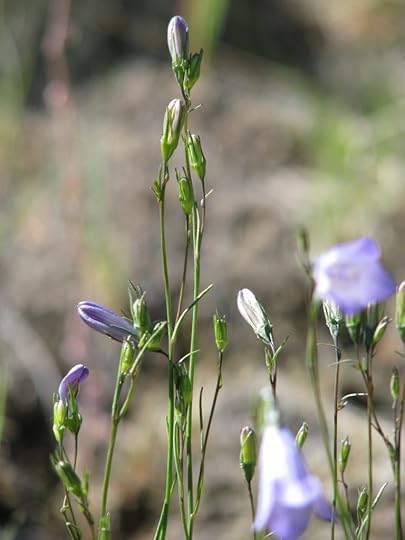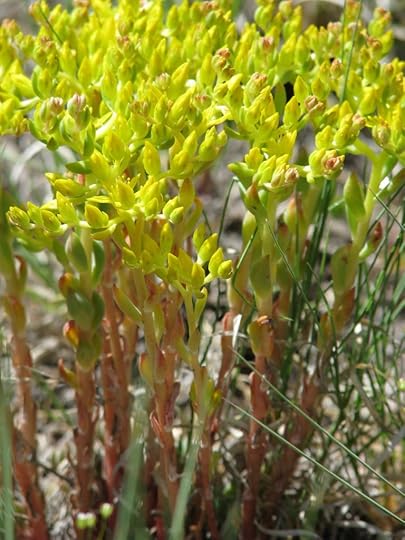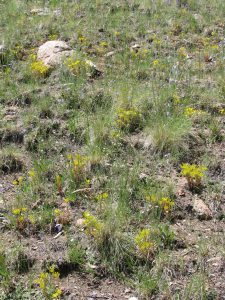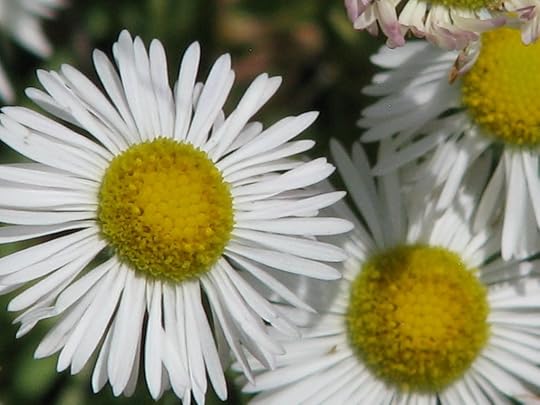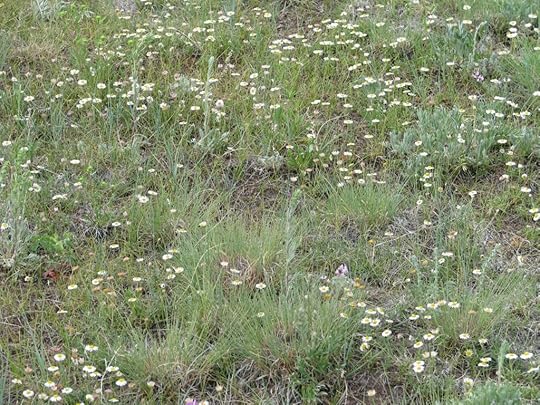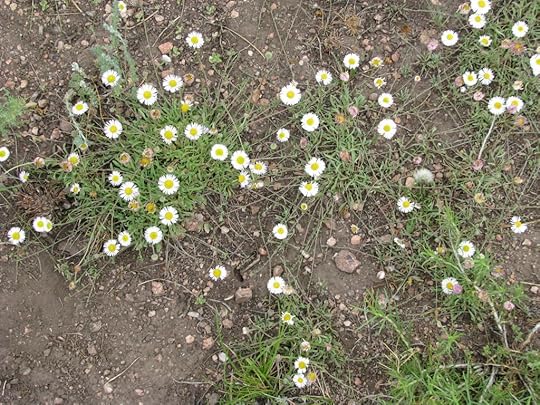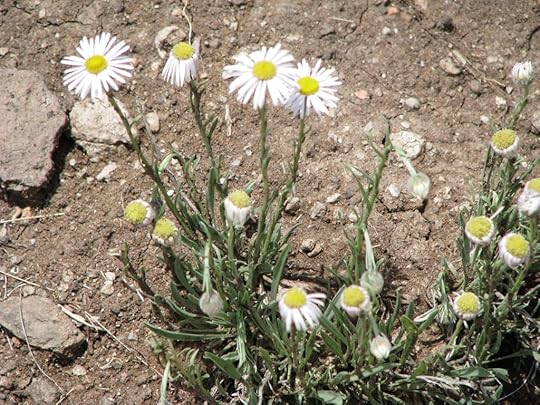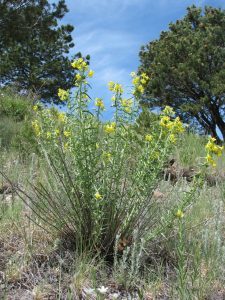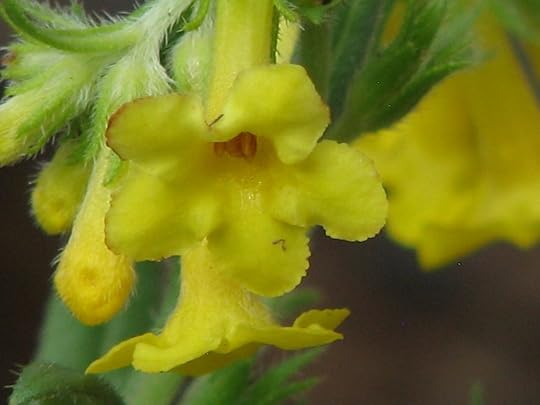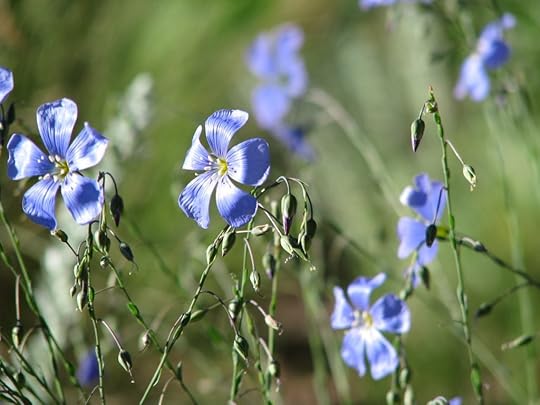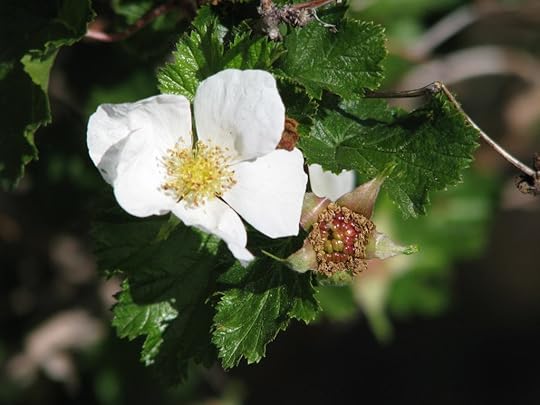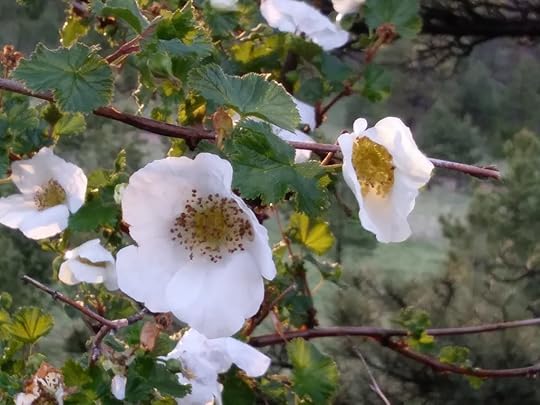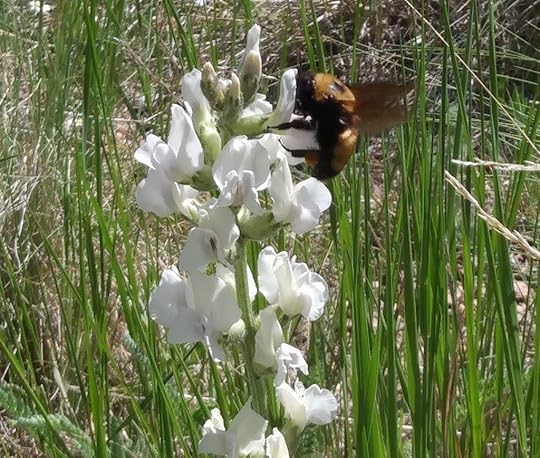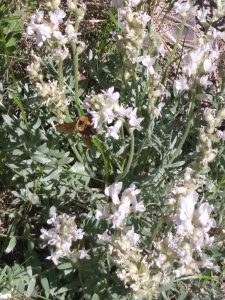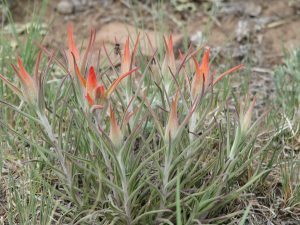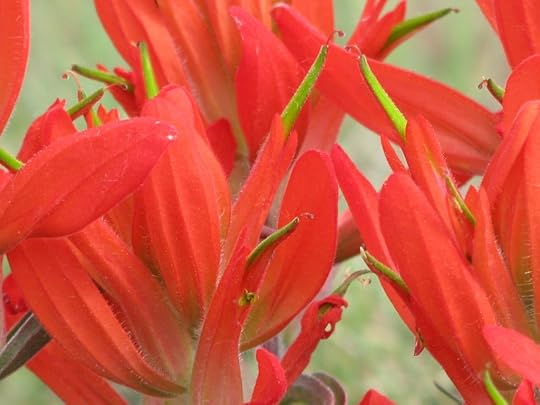Andrea M. Jones's Blog, page 6
July 13, 2019
Rocky Mountain Ninebark
Physocarpus monogynus
As charming as this flowering shrub is, you’d think I would have learned its name long ago, but I didn’t look it up until last year. “Ninebark” comes from the belief that the shrub’s shredding bark consisted of nine layers.
Near the house, they are low bushes under the pines, but I’ve seen them in the neighborhood as enormous mounds, bright green in summer, but looking more like a snowball cannon about to go off in a year like this.
July 12, 2019
Clustered Broomrape
This was a rare treat; I’m not sure I’ve ever seen this cool-looking little plant before.
The plants are parasitic, and this one is most likely dependent on the fringed sage (Artemisia frigida) you see growing at the base (silvery green foliage around the pink stems).
For scale, the cluster was no more than four inches high.
There’s some ambiguity on the name (yes, I know, that could be the title for this entire series), but I’m leaning toward clustered rather than single-flowe broomrape. Evidently one way to determine which species is which is to uproot the plant and compare the relative length of the underground tuber compared to the stem. Even if I could find this plant again, I’d never t dig it up, so I’m calling it clustered broomrape and enjoying the heck out of the fact that I came across it.
July 11, 2019
Harebells
My field guide gives the common name as “Common Harebell,” but in my opinion there’s nothing common about them (okay, other than that they’re common (as in frequently seen, particularly this summer)).
Pretty, pretty, pretty:
And this year, more than I’ve ever noticed before, growing in dense clumps…
…with more to come.
Campanula rotundifolia
July 10, 2019
Lance-Leaved Stonecrop
Sedum lanceolatum
I tend to think of this bunchy upright succulent as a loner, but right now I’m seeing crops of stonecrops:
July 9, 2019
Fleabanes and the Like
Another one of those large flower groups that prove troublesome to those of us who haven’t learned to key out plants.
These are some of the first flowers we see in spring, but like so many of the native plants, they know how to take advantage of precipitation; our May and early June snowstorms encouraged them to keep blooming.
All pictured here have dime-sized flowers, and in places they are flowering with great enthusiasm.
The most common fleabane up here enthusiastically throws runners across bare ground.
The plants above are exercising their spreading habit near one of the gates in the horse pasture, where we’ve been mowing to deter a mixed population of kochia and lamb’s quarters. We use the string trimmer to selectively hit the weeds when they’re six or seven inches tall, leaving other plants to set seed. Both kochia and lamb’s quarters are annuals, so pulling them would be the ideal method, and I do that too, but since this is in an area we see on a daily basis, we can hammer the whole population in a few minutes as needed, minimizing how much these weeds re-seed. They are steadily losing ground as the native plants and grasses move back in: what was a sacrifice zone in the pasture is recovering. Those little runners are very talented at catching grass seed, which helps the re-vegetation process, too.
A different species forms discrete clumps:
July 8, 2019
Narrow-leaved puccoon
If you’re new to Between Urban and Wild or haven’t stopped by in a while, we’re having a terrific wildflower year in this part of central Colorado.
I’m spending July blogging the bloom: posting a photo a day of a plant that’s flowering this month. My rules are: native plants, all photographed in July, and sighted on foot from home.
Today’s flower is prolific at the moment, and a nice bit of sunny cheer to get your Monday off to a good start.
Based on the frilly edges of the flowers, the narrow leaves, and the texture of the hairs on the leaves, I’m going with Lithospermum incisum on this one.
The idea behind this project was to give me an excuse to get outside and enjoy the spectacular show going on around us this year. As so often happens when you start paying attention, the details suck you in. I’ve always thought of this plant as yellow puccoon (L. ruderale) because it pretty closely matched the picture in one of my field guides, but I’m feeling a bit of pressure with y’all looking over my shoulder, so I dug deeper.
I was profoundly frustrated yesterday, because everything seemed to match up with the narrow-leaved puccoon, except the flowers on the plants here weren’t crinkly…or were they? Funny what you find out when you let go of what you think you know and try to see and not assume.
July 7, 2019
Western Blue Flax
July 6, 2019
Thimbleberry
I’ve been using the term “wildflowers,” but I’m including flowering plants more broadly in my project.
They’re almost finished flowering now, with just a few scattered flowers on the bushes, but a month or so ago the thimbleberry shrubs were thick with these fluttery pure-white blooms. There’s a large thimbleberry growing alongside our driveway between the house and the barn, and I admire these flowers multiple times a day in early summer.
It took me a while to identify this plant, because applying the word “berry” is an exercise in optimism. Several years ago, when an oddball May weather pattern dumped six inches of rain here over a a few weeks, our thimbleberry actually formed little red fruits: more buttons than berries, but enough to give me the “a-ha” moment and confirm an identification. I tried one, which tasted like I imagine a raspberry would if you mashed it, rinsed away the pulp, and just ate the seeds. It would be handy if the berries were more berry-like, since the there are no thorns on the plants, so picking would be relatively painless, but there’s more for the wildlife this way, I suppose.
This is a little bit of a cheat, but here’s the same bush a few weeks ago, in mid-June.
July 5, 2019
Silky Locoweed
This white form of locoweed tends to bloom early. Most of it has set set seed in our area already, but those plants still flowering are popular.
Oxytropis sericea
Same bumblebee here (it worked over a cluster of plants quite thoroughly while I watched), in a picture that shows the sage-gray plant.
July 4, 2019
Scarlet Paintbrush
Okay, everyone, I need you to imagine the sound of a bottle rocket launching.
tskssssssssssksssssshsss….
sksssssssshssskssssssss….
shsssksssssssssssskssssss…
Bang!
Castilleja miniata

